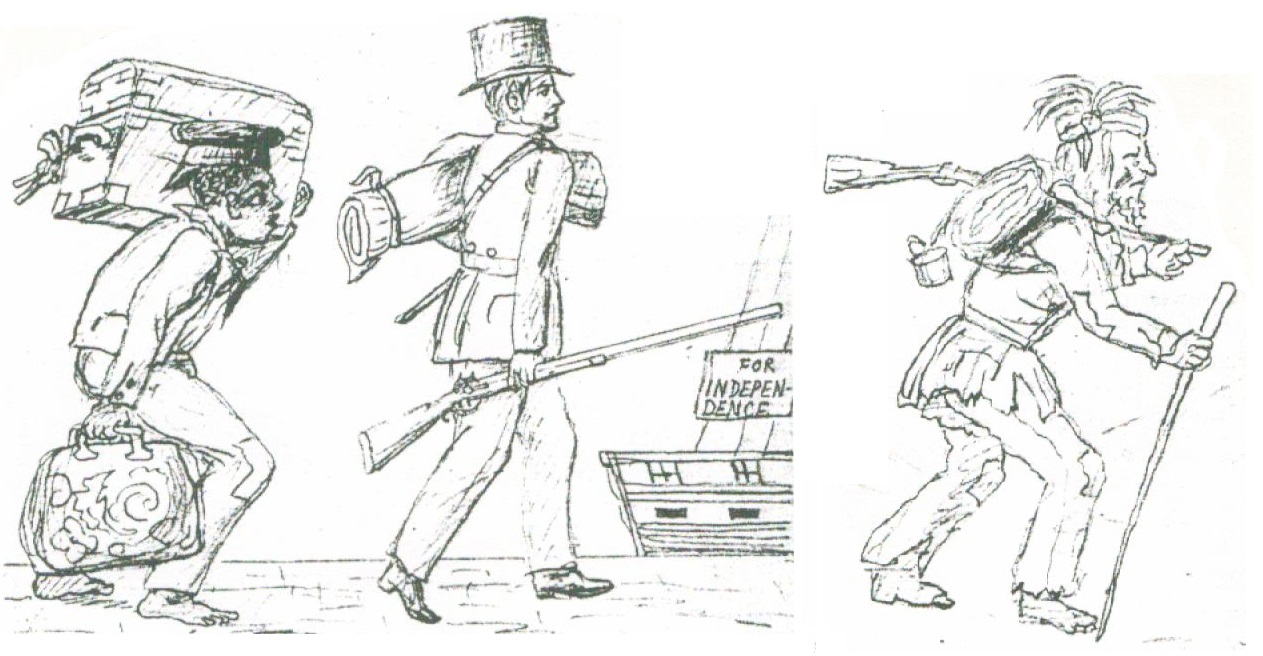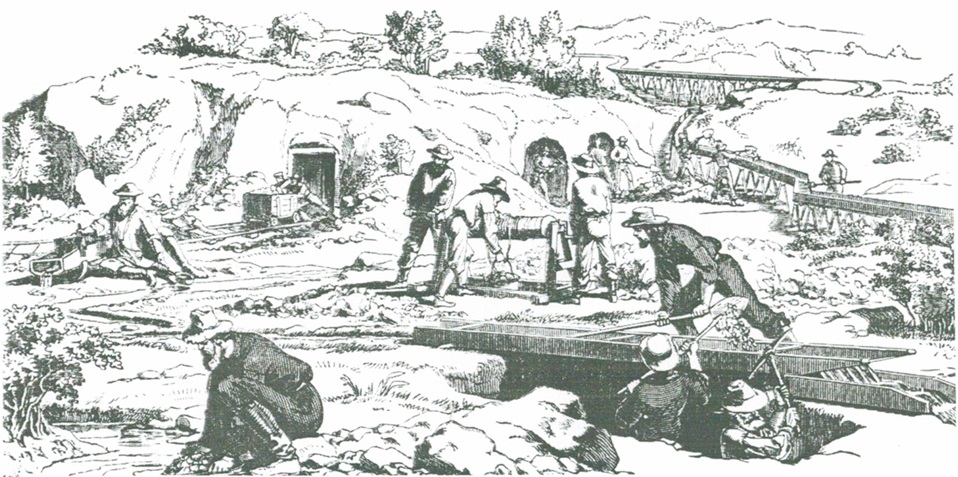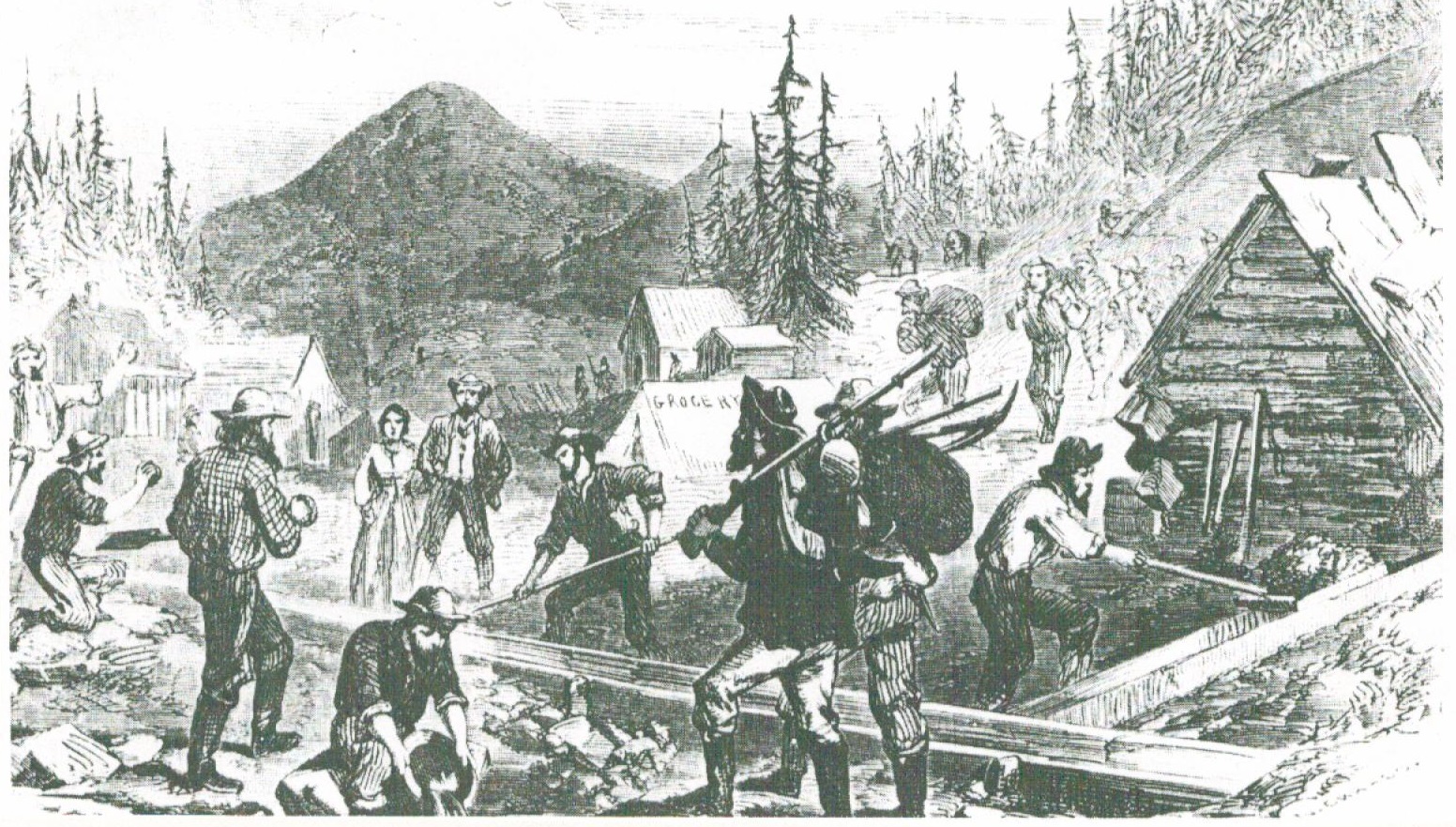|
|
|
|
Source AA newspaper headline:
Kansas Weekly Press (September 1858)
Source BBefore and After: the story of a Gold Seeker
Drawings by a gold miner.
|
Consider:1. How does Interpretation A differ from Interpretation B about gold mining? 2. Why might the authors of Interpretations A and B have a different interpretation about gold mining? 3. Which interpretation gives the more convincing opinion about gold mining? Explain your answer based on your contextual knowledge and Sources A-F.
|
|
Source CA Miner's Opinion This morning, ignoring the rain, we were at work again. We must work. In sunshine and rain, in warm and cold, in sickness and in health, successful or not, early and late, it is work, work, WORK. Work or die! All the miners here work - not for gold, but for bread! Cheerful words are not often heard, even less the shout or laugh which tells us that somebody has found gold. We have only made 50 cents each! Frederick Marryat, an Englishman who became a gold miner (c.1850)
Source DA Miner's Diary Friday, April 22 Bad News from the Mine 'No Gold' and people starving by the hundreds so says rumour, it gives us all the Blues. Thursday May 5 Today Will Duey and myself have been panning for gold. Have washed out the Enormous Sum of $3.80, half of which we get, being 95 cents each. Saturday May 14 Today Will and I have been finishing our cabin Daubing it with mud and making a bed to sleep on. We think we have a pretty comfortable bed, it consists of poles, Pine branches and grass. Thursday May 19 Have been working all day and think we have found some gold, but don't know how much yet. One thing I do know that its Darned hard work carrying Dirt 100 yards down a steep Mountain. It ought to pay very well. Saturday May 21 Will and John were down with fever by noon, which left Charley and Ito work alone. We earned sixty dollars but this evening I felt bad, I worked too hard. Friday June 17 Worked today hot as it was. Tomorrow will be out last run. We sold our fifty feet Today for Ten Thousand Dollars. As soon as that is paid then we will go back east. Monday July 4 Such a trip as I have had. Oh my Legs My feet and My everything how I ache from head to Toe! Diary of David Spain (1859)
|
Consider:1. What do Sources C and D tell us about: 2. How reliable do you think these soucres are likely to be? Why?
|
|
Source EA California Mine
Woodcut by Anthony & Baker, How the California Mines
are Worked (c.1850)
Source FA Typical Gold-Mining Settlement
Engraving by G Orr of Gregory Gold Diggings during the Pike's Peak Gold Rush, Colorado (1859)
|
Consider:1. How useful are Sources E and F to an historian? Explain your thinking.
|
|
|
| ||



